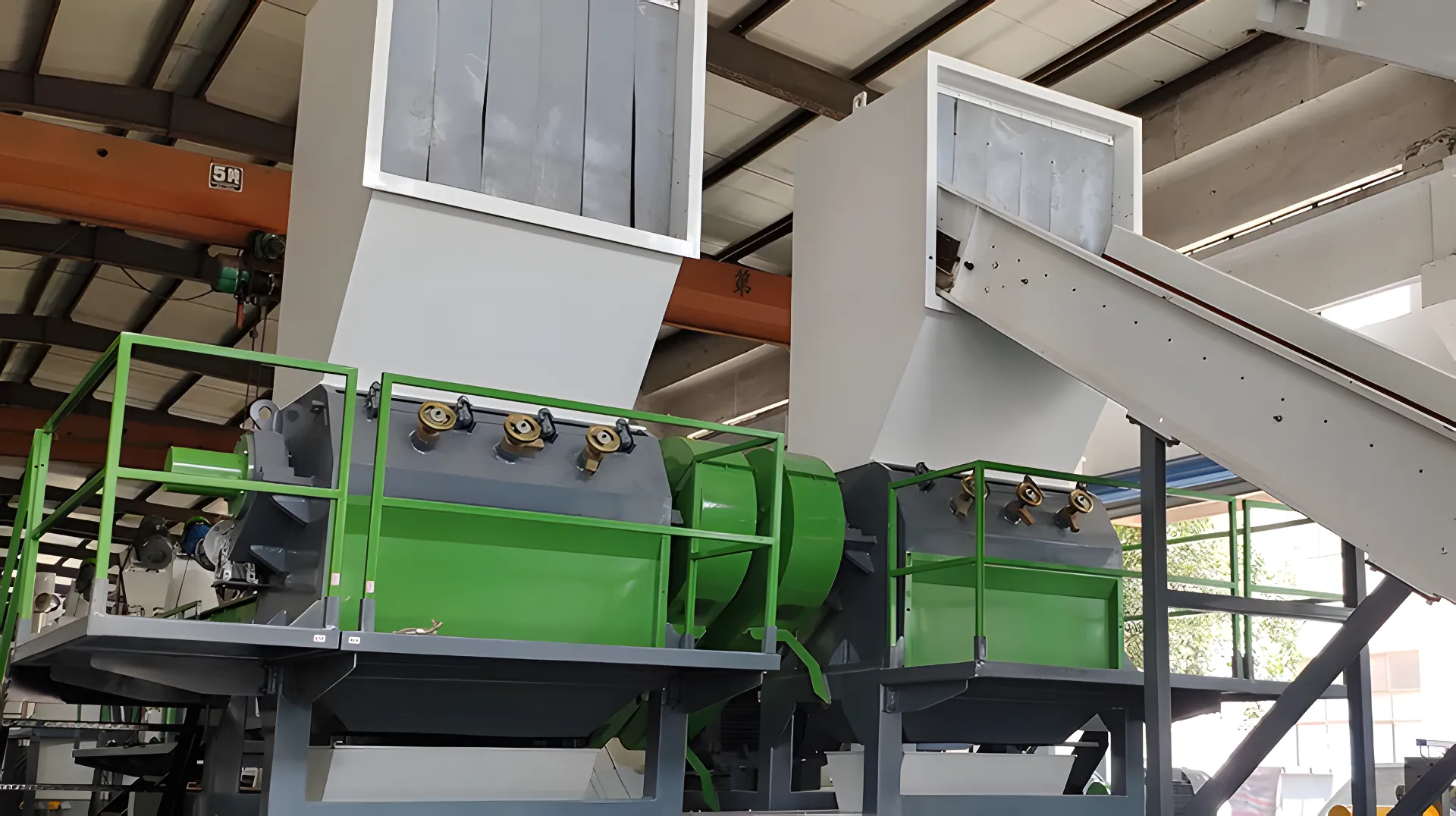When it comes to recycling PET bottles, the granulator is a critical piece of machinery. Granulators transform PET bottles into small, manageable plastic flakes, which can be further processed and recycled. This comprehensive guide will walk you through everything you need to know about granulators for PET flakes—from how they work, their benefits, to tips on choosing the right one for your needs.
Understanding PET Granulators
What is a Granulator?
A granulator is an industrial machine designed to cut PET bottles into small flakes. These machines are equipped with an open rotor mounted with heavy-duty knives that spin at high speeds. The granulator operates in a specialized cutting chamber where the rotating knives interact with stationary knives to chop up the PET bottles into finer pieces.
How it Works
- Feeding the Granulator: PET bottles are first fed into the machine, either manually or via a conveyor belt.
- Cutting Process: Inside the cutting chamber, the high-speed rotating knives cut the bottles into small flakes. A screen with small holes, typically between 12-18mm in diameter, controls the size of the flakes. The flakes will continue to circulate within the chamber until they are small enough to pass through these holes.
- Washing & Lubrication: Spraying water into the cutting chamber serves dual purposes—it washes the flakes and reduces friction, which ultimately extends the life of the cutting knives.
Key Features
- High-Speed Rotating Knives: The heart of the granulator, responsible for cutting PET bottles into flakes.
- Stationary Knives: Work in tandem with rotating knives to ensure efficient cutting.
- Water Spraying System: Helps in cleaning the flakes and reducing friction during the cutting process.
- Screens & Sieves: Ensure that only sufficiently small flakes pass through to the next stage of recycling.
Benefits of Using a Granulator for Recycling PET Bottles
- Efficiency: Granulators provide a fast and efficient way to cut PET bottles into recyclable flakes.
- Volume Reduction: Granulating reduces the volume of PET waste significantly, making it easier to handle and transport.
- Versatility: Aside from PET bottles, granulators can handle various other types of plastic waste, making them a versatile tool for any recycling operation.
- Improved Cleanliness: The integrated water spraying system not only keeps the cutting chamber cool but also begins the cleaning process, which is crucial for high-quality recycling.
Choosing the Right Granulator
When selecting a granulator for PET flakes, consider the following factors:
Size and Capacity
- Throughput: How much material can the granulator handle per hour? Ensure it matches your operational needs.
- Cutting Chamber Size: This will determine the size of the PET bottles you can feed into the machine without pre-cutting.
Blade Quality
- Material: Opt for blades made of high-quality steel to withstand the wear and tear of continuous use.
- Sharpening: Consider how easy it is to sharpen or replace the blades, as dull blades can reduce efficacy.
Energy Consumption
- Efficiency: Look for machines with lower energy consumption without compromising on performance.
Additional Features
- Noise Reduction: Some granulators come with noise-dampening features to make operations quieter.
- Ease of Maintenance: Machines that are easy to clean and maintain will save you time and money in the long run.
FAQs: Granulators for PET Flakes
Q1: How often do the blades in a granulator need to be replaced?
A1: It depends on the frequency of use and the quality of the blades. High-quality blades may only need replacing every few months, while lower-quality blades might require more frequent changes.
Q2: Can a granulator handle other types of plastic besides PET?
A2: Yes, many granulators are designed to handle various types of plastic waste, including HDPE, PP, and PVC.
Q3: Is it necessary to wash PET bottles before granulating them?
A3: While not strictly necessary, pre-washing can help ensure a higher quality of recycled flakes and reduce wear on the blades.
Q4: What is the typical size of the flakes produced by a PET granulator?
A4: The size of the flakes typically ranges from 12 to 18mm, depending on the screen size used within the granulator.
Q5: How much water does a granulator use?
A5: Water usage varies depending on the design of the machine, but most modern granulators are designed to be water-efficient.
Q6: Can the granulator process PET bottles with labels?
A6: Yes, the granulator can process bottles with labels, but the labels will need to be separated later in the recycling process.
Conclusion
A granulator is an indispensable machine in the recycling of PET bottles, ensuring efficiency, cleanliness, and high-quality output. By understanding the mechanics, benefits, and key features, you can make an informed decision when choosing the right granulator for your needs. Whether you’re looking to enhance your recycling operation or just starting, a reliable granulator can be a game-changer in your PET recycling journey.



